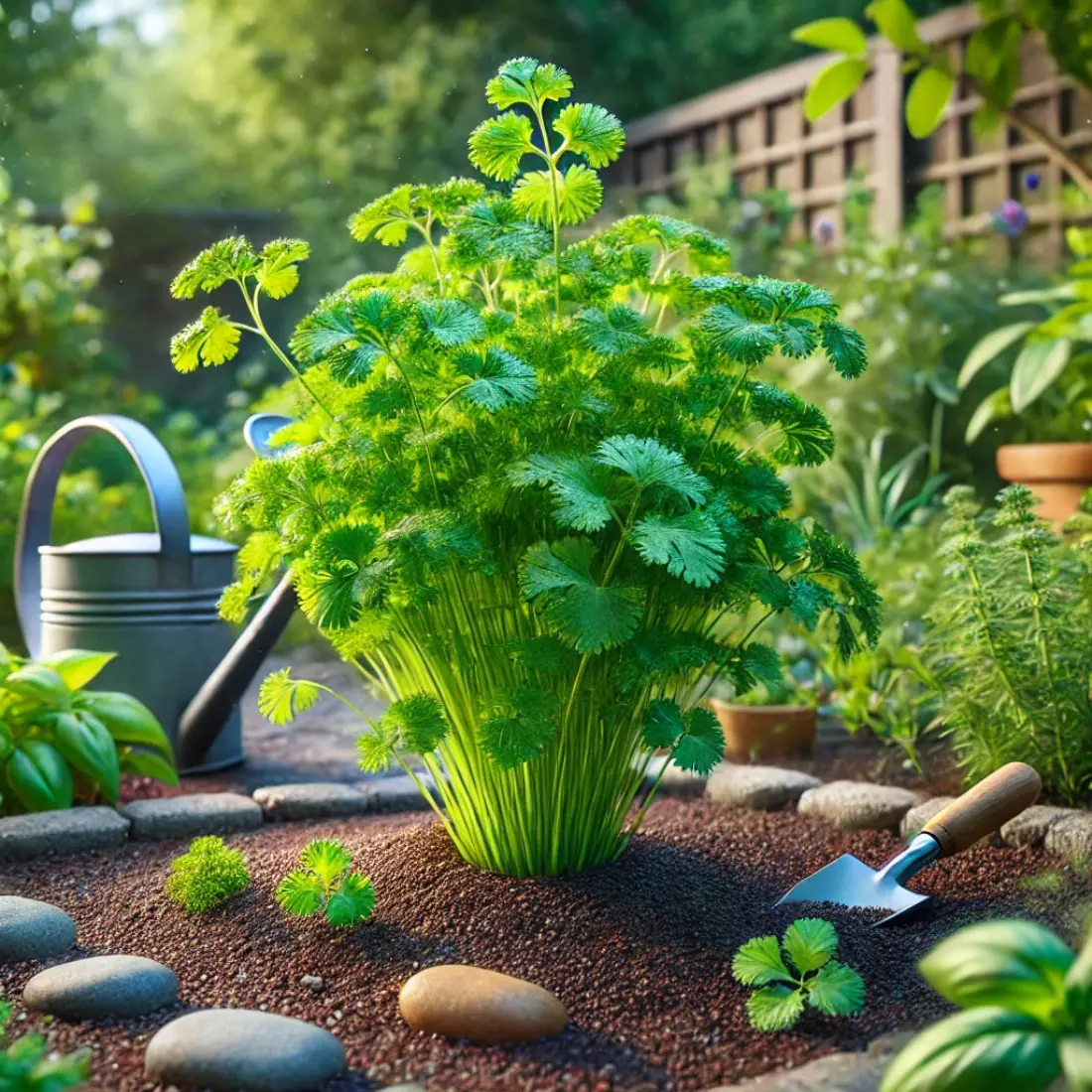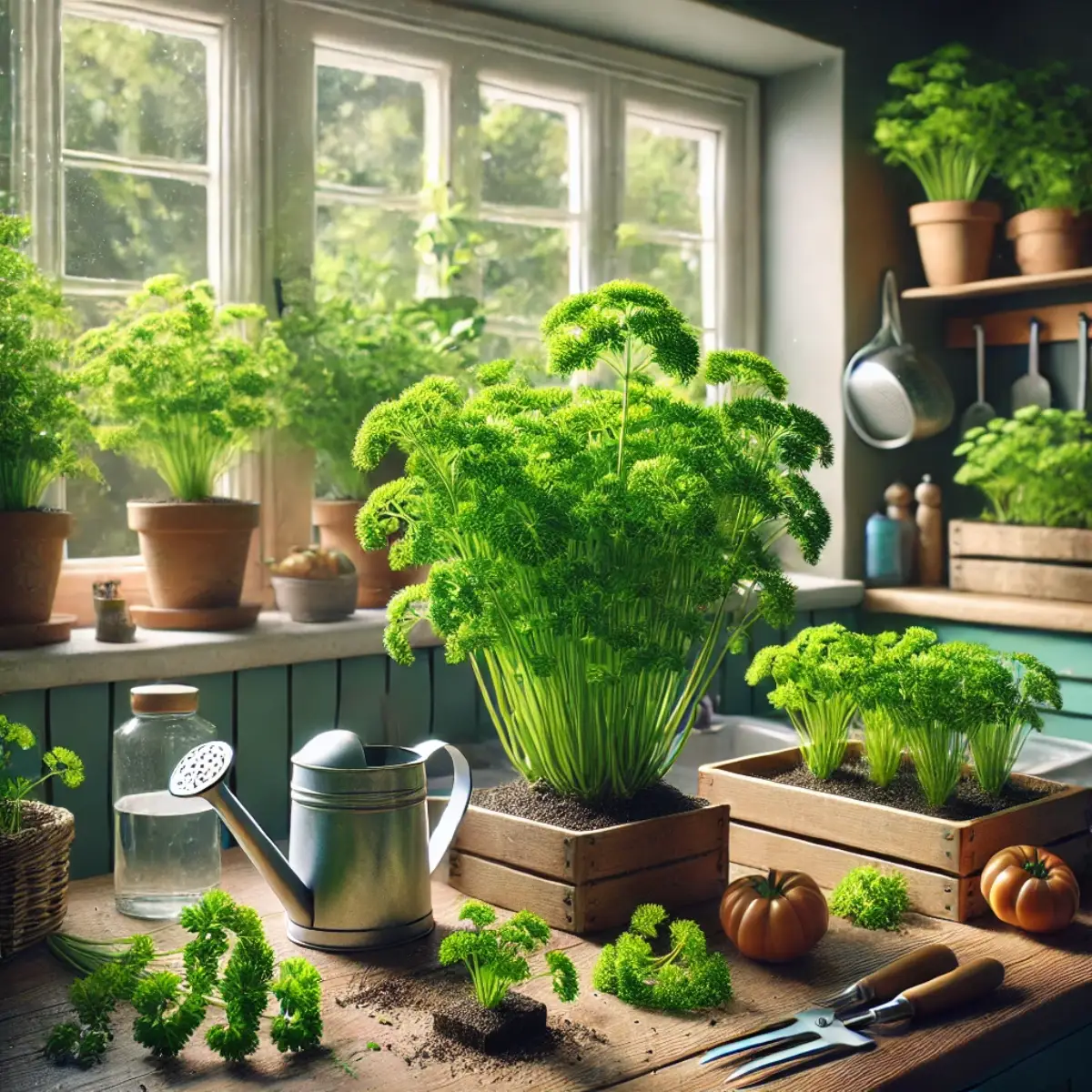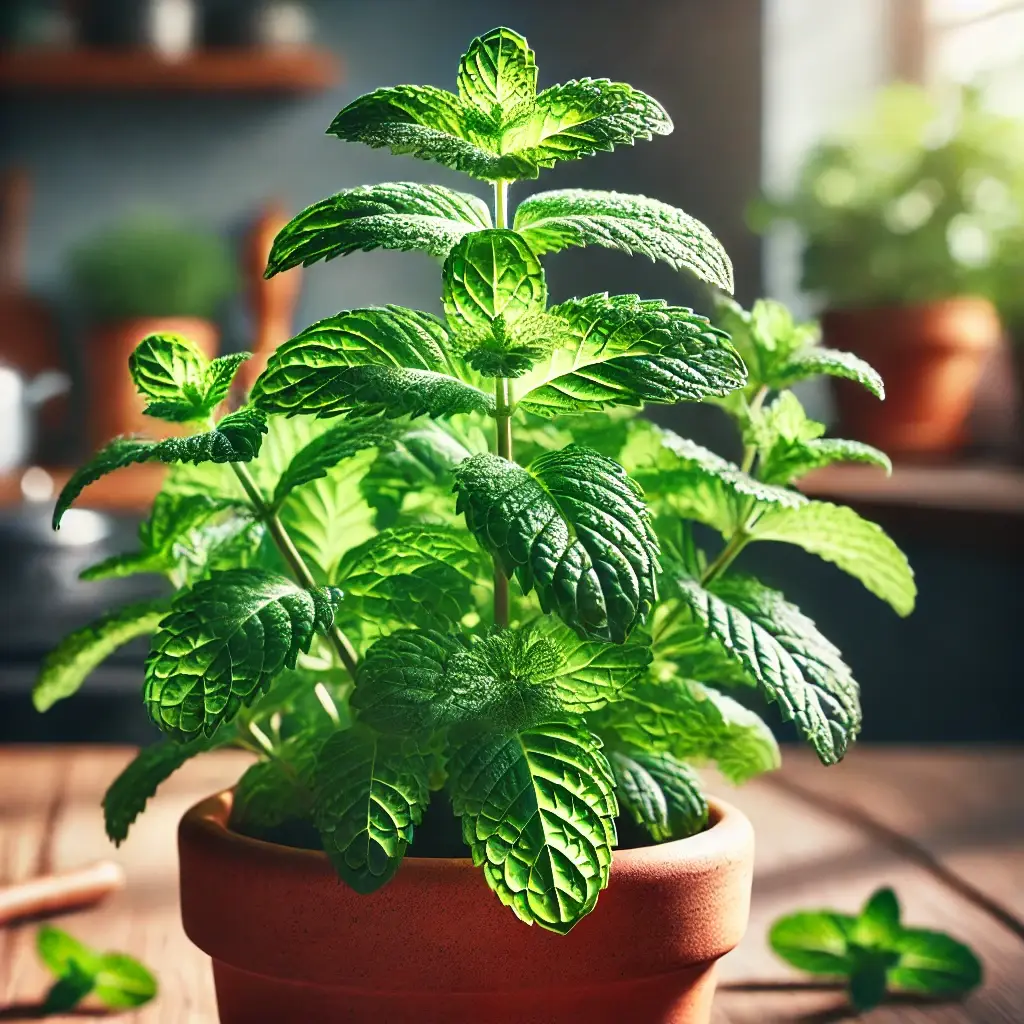Cilantro, also known as coriander, is a popular herb used in various cuisines worldwide. Its unique flavor makes it a favorite in salsas, curries, and salads. Learning how to grow and care for cilantro both indoors and outdoors ensures a fresh supply of this delightful herb year-round.
- Cilantro thrives in well-draining soil with a pH of 6.2 to 6.8.
- Indoors, cilantro requires a container with good drainage and at least 6 hours of sunlight or strong artificial light daily.
- Outdoors, cilantro grows best in a sunny location but can tolerate partial shade.
- Water cilantro regularly, keeping the soil consistently moist but not waterlogged.
- Fertilize cilantro lightly with a balanced, organic fertilizer every few weeks.
- Harvest cilantro by cutting the outer leaves first, allowing the plant to continue producing.
- Watch for common pests like aphids and spider mites and manage them with natural remedies or insecticidal soap.
- To prevent bolting, which is premature flowering, keep cilantro cool and well-watered, especially during hot weather.
Growing Cilantro Indoors
Choosing the Right Container: Selecting the appropriate container is crucial for growing cilantro indoors. Choose a pot that is at least 8-12 inches deep to allow adequate root growth. Ensure the container has drainage holes to prevent waterlogging, which can cause root rot.
Soil Requirements: Cilantro prefers well-draining soil with a pH of 6.2 to 6.8. Use a high-quality potting mix enriched with organic matter. Avoid using garden soil as it may be too dense and lack proper drainage.
Planting Cilantro Indoors: Start by filling your container with the potting mix, leaving about an inch from the top. Sow seeds about 1/4 inch deep and cover them lightly with soil. Space seeds approximately 2 inches apart. Water the soil gently but thoroughly after planting. Cilantro seeds can also be soaked overnight before planting to speed up germination.
Light and Temperature Needs: Cilantro requires at least 6 hours of sunlight daily. Place your container near a south-facing window or use a grow light if natural light is insufficient. The ideal temperature for growing cilantro indoors is between 65-75°F (18-24°C).
Watering and Feeding: Keep the soil consistently moist, but not waterlogged. Water when the top inch of soil feels dry to the touch. Cilantro benefits from light fertilization every 4-6 weeks. Use a balanced, water-soluble fertilizer diluted to half strength.
Indoor Pest Management: Common indoor pests include aphids, spider mites, and whiteflies. Inspect your plants regularly for signs of infestation. Use insecticidal soap or neem oil to treat pests naturally. Ensure good air circulation around the plants to minimize pest problems.
Harvesting Cilantro Indoors: Begin harvesting when plants are 6-8 inches tall. Cut the outer leaves first, leaving the central growth to continue producing. Regular harvesting encourages more growth. For the best flavor, harvest in the morning when the essential oils are most concentrated.
Growing Cilantro Outdoors
Preparing the Outdoor Garden Bed: Preparing the garden bed is crucial for growing healthy cilantro. Choose a sunny location with well-draining soil. Amend the soil with compost or aged manure to improve fertility and drainage. Aim for a soil pH between 6.2 and 6.8. Rake the bed to remove any debris and create a smooth, level surface for planting.
Planting Cilantro Outdoors: Cilantro can be direct-seeded or transplanted. For direct sowing, plant seeds 1/4 inch deep and space them about 6 inches apart. Thin seedlings to about 6 inches apart once they reach 2 inches in height. If transplanting, space seedlings 6-8 inches apart. Plant in early spring or fall, as cilantro prefers cooler weather.
Sunlight and Temperature Needs: Cilantro thrives in full sun but can tolerate partial shade, especially in hot climates. Aim for at least 4-6 hours of sunlight per day. Cilantro prefers temperatures between 50-85°F (10-29°C). Mulching around plants can help maintain soil moisture and temperature.
Watering and Feeding : Water cilantro regularly, keeping the soil consistently moist but not waterlogged. Water deeply to encourage strong root growth. Fertilize lightly with a balanced, organic fertilizer every 4-6 weeks. Avoid over-fertilizing, as this can lead to excessive leaf growth with less flavor.
Outdoor Pest Management: Common pests include aphids, caterpillars, and whiteflies. Inspect plants regularly and use organic pest control methods, such as neem oil or insecticidal soap. Encourage beneficial insects like ladybugs and lacewings by planting companion plants like marigolds and dill.
Harvesting Cilantro Outdoors: Harvest cilantro when plants are 6-8 inches tall. Cut the outer leaves first, allowing the plant to continue producing. For the best flavor, harvest in the morning. Regular harvesting prevents bolting and encourages bushier growth. Cilantro will bolt in hot weather, producing flowers and seeds. Harvest leaves frequently to delay bolting.
Storing and Using Harvested Cilantro: Store fresh cilantro in the refrigerator, wrapped in a damp paper towel and placed in a plastic bag. Alternatively, place stems in a jar of water with a plastic bag loosely covering the leaves. Cilantro can be frozen by chopping and placing in ice cube trays with water or oil. Use cilantro in salsas, curries, salads, and as a garnish to add fresh, vibrant flavor to your dishes.
Common Problems and Solutions
Cilantro may face several issues:
- Bolting: Prevent by keeping the soil cool and moist. Mulch around plants and harvest frequently.
- Yellowing Leaves: Could be due to overwatering, poor drainage, or nutrient deficiencies. Adjust watering practices and check soil fertility.
- Diseases: Fungal issues like powdery mildew can occur in humid conditions. Improve air circulation and avoid overhead watering. Use fungicidal sprays if necessary.
FAQs about Cilantro (Coriander)
How long does it take for cilantro to grow?
Cilantro typically takes about 3-4 weeks to germinate and 6-8 weeks to reach a harvestable size. Cooler temperatures may slightly extend this timeline.
Can cilantro grow in partial shade?
Yes, cilantro can grow in partial shade. While it prefers full sun, especially in cooler climates, partial shade can help prevent bolting in hotter weather.
How often should I water cilantro?
Water cilantro regularly to keep the soil consistently moist but not waterlogged. Typically, this means watering 2-3 times per week, depending on weather conditions and soil type.
Why is my cilantro bolting?
Bolting occurs when cilantro flowers prematurely, often due to high temperatures or insufficient water. To prevent bolting, keep the soil cool and moist, and harvest leaves regularly.
Can I grow cilantro year-round?
Cilantro can be grown year-round indoors with proper light and temperature conditions. Outdoors, it is best grown in spring and fall to avoid the heat of summer, which can cause bolting.
What type of soil is best for cilantro?
Cilantro thrives in well-draining soil with a pH of 6.2 to 6.8. Enrich the soil with organic matter, such as compost or aged manure, to improve fertility and drainage.
How do I harvest cilantro?
Harvest cilantro when plants are 6-8 inches tall. Cut the outer leaves first, leaving the central growth to continue producing. Regular harvesting encourages more growth and prevents bolting.
What pests commonly affect cilantro?
Common pests that affect cilantro include aphids, spider mites, and whiteflies. Inspect plants regularly and use organic pest control methods like neem oil or insecticidal soap to manage infestations.
How do I store fresh cilantro?
Store fresh cilantro in the refrigerator, wrapped in a damp paper towel and placed in a plastic bag. Alternatively, place stems in a jar of water with a plastic bag loosely covering the leaves to extend freshness.
Can I grow cilantro from cuttings?
Cilantro is typically grown from seeds rather than cuttings. While it’s possible to root cilantro cuttings in water, starting from seeds is more common and effective for growing a healthy plant.









